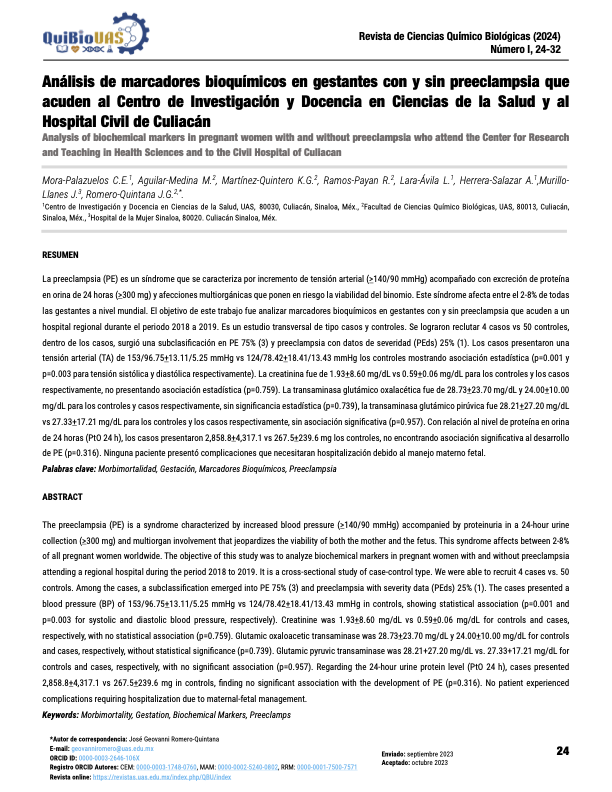Analysis of biochemical markers in pregnant women with and without preeclampsia who attend the Center for Research and Teaching in Health Sciences and to the Civil Hospital of Culiacan
Keywords:
Morbimortality, Gestation, Biochemical Markers, PreeclampsAbstract
The preeclampsia (PE) is a syndrome characterized by increased blood pressure (>140/90 mmHg) accompanied by proteinuria in a 24-hour urine collection (>300 mg) and multiorgan involvement that jeopardizes the viability of both the mother and the fetus. This syndrome affects between 2-8% of all pregnant women worldwide. The objective of this study was to analyze biochemical markers in pregnant women with and without preeclampsia attending a regional hospital during the period 2018 to 2019. It is a cross sectional study of case-control type. We were able to recruit 4 cases vs. 50 controls. Among the cases, a subclassification emerged into PE 75% (3) and preeclampsia with severity data (PEds) 25% (1). The cases presented a blood pressure (BP) of 153/96.75+13.11/5.25 mmHg vs 124/78.42+18.41/13.43 mmHg in controls, showing statistical association (p=0.001 and p=0.003 for systolic and diastolic blood pressure, respectively). Creatinine was 1.93+8.60 mg/dL vs 0.59+0.06 mg/dL for controls and cases,
respectively, with no statistical association (p=0.759). Glutamic oxaloacetic transaminase was 28.73+23.70 mg/dL y 24.00+10.00 mg/dL for controls and cases, respectively, without statistical significance (p=0.739). Glutamic pyruvic transaminase was 28.21+27.20 mg/dL vs. 27.33+17.21 mg/dL for controls and cases respectively, with no significant association (p=0.957). Regarding the 24-hour urine protein level (PtO 24 h), cases presented 2,858.8+4,317.1 vs 267.5+239.6 mg in controls, finding no significant association with the development of PE (p=0.316). No patient experienced complications requiring hospitalization due to maternal-fetal management.
Downloads

Downloads
Published
Issue
Section
Categories
License
Copyright (c) 2024 Journal of Biological Chemical Sciences

This work is licensed under a Creative Commons Attribution-NoDerivatives 4.0 International License.


